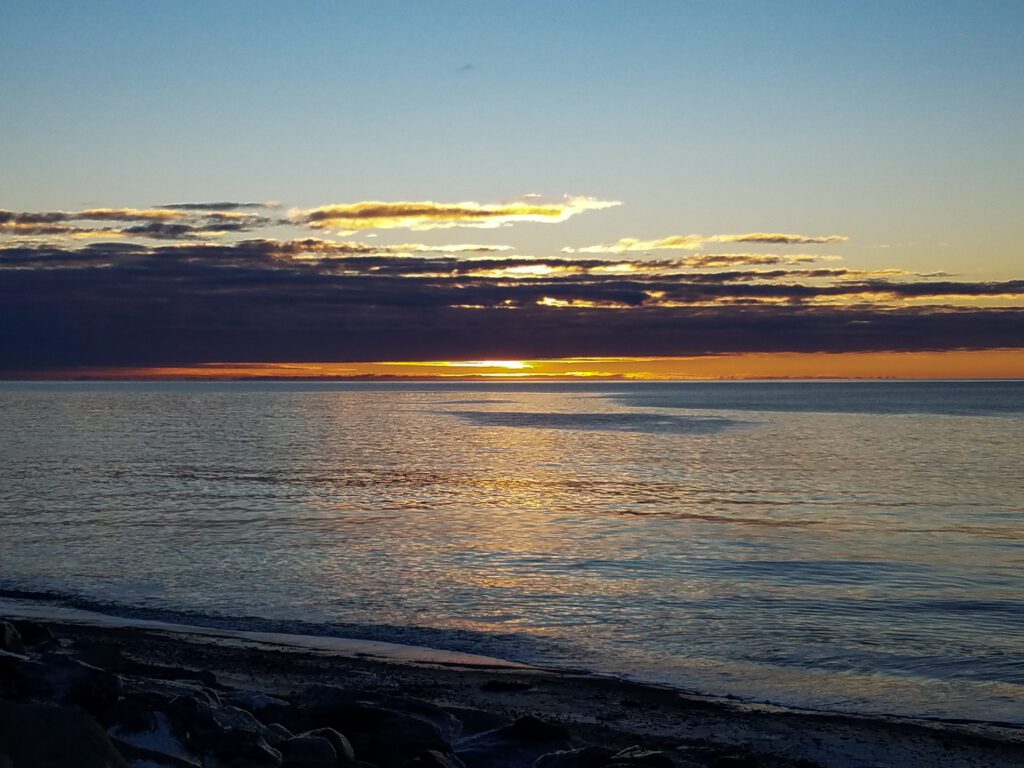I didn’t notice them at first.
Sure, I have my excuses: I was new to town, it was summer, and there was so much new to see. But I didn’t notice them until someone started explaining to me why there are so many ravens in Nome. “I heard it’s because of the dump; they can feed there all winter, so they don’t need to fly south. Just drive out to the dump and look. Just wait until winter.”
After that, I started seeing ravens more and more frequently: huge black birds circling in the distance, walking sideways along an electrical wire across the street, and hanging out on a pick-up truck with a chunk of flesh in its beak. And I started to understand why some people might not like living in close proximity to ravens.
For one thing, they are huge, powerful birds—way more menacing than the pigeons that descended on Baltimore in the winter. Ravens aren’t afraid of people in the same way that other city-birds are. When I stood transfixed by that raven who’d found some caribou leftovers, he stared right back at me without flinching. It gave the definite impression that the raven in question wouldn’t mind eating me if the opportunity ever presents itself.
For another, ravens don’t have the best reputation in western culture. You’ve seen the images: harbingers of death and destruction. Edgar Allen Poe was fond of ravens, but that’s hardly going to improve their reputation. Alfred Hitchcock’s film The Birds instilled an irrational fear of avians in an entire generation, including my mother. (She once locked all of us in her bedroom and called my father home from work when a swallow accidentally flew into our house.)

As you might imagine, for a few weeks I was pretty unnerved by the Nome’s growing raven population. Then we went to the Blueberry Festival and met a kind woman who told a story to go with her raven paintings—“How the Raven Brought Light to the World.”

A few weeks later, I’d invited Colleen into the station to record her story for the “Eskimo Stories and Legends” program. There was a little confusion; I came ready to describe the program, and Colleen came ready to read some stories aloud. After a quick scramble, I found some other stories about the raven in the station’s collection for Colleen. And thus the first episode I produced was a collection of stories about the raven, in all his mischievous, clever glory.
By the time I finished editing it, the raven was a different bird in my eyes. Fear and disgust shifted to a kind of admiring respect. The character those stories depicted should never be underestimated but also wasn’t a figure of horror.
In an article I found while doing some research for the annual KNOM Christmas play, I learned that that respect is part of the reason that ravens linger in Alaska during the winters. For centuries people in Europe have driven out ravens because of their unsavory reputations. But in this region ravens are subjects of reverence, so they can live here unmolested throughout the year.
Every day I see more black birds swooping past the window as I work, probably because they stand out so starkly from the snow. (Poe would love that image, wouldn’t he?) But they’re… reassuring, I guess. When we eye each other outside the library, I imagine we’re sizing each other up, recognizing a being as intelligent and resilient as we are, and agreeing to a truce. It’s an Old West standoff, where we both walk away without shooting.
How can you not respect something that has the nerve and the know-how to live in this beautiful, frozen place?







